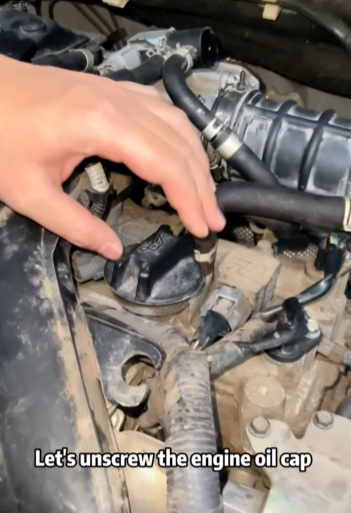
In today’s world, GPS technology plays a vital role in vehicle navigation, fleet management, and theft recovery. Many modern vehicles come equipped with built-in GPS locators, and aftermarket GPS tracking devices are commonly installed for added security and monitoring. But what if you want to find the GPS locator in your car—whether to inspect, maintain, replace, or disable it? This comprehensive guide will walk you through how to locate a GPS tracker in a car, from common locations to tips and tools you might need.
Why Would You Want to Find a GPS Locator?
Before diving into the how-to, it’s essential to understand why someone would want to find a GPS locator in a car:
- Check Installation or Maintenance – If you installed a GPS yourself or through a professional service, you might want to check if it’s working properly or if the battery needs replacement.
- Privacy Concerns – In some rare cases, people worry that they’re being tracked without their consent.
- Vehicle Purchase – When buying a used vehicle, it’s wise to check for hidden GPS devices.
- Fleet Management – Employers or business owners might want to inspect devices on company vehicles.
Types of GPS Locators
There are several types of GPS tracking devices you might find in a vehicle:
- Factory-Installed GPS – Integrated into the car’s infotainment system; used for navigation or services like OnStar.
- Plug-and-Play Trackers – Inserted into the OBD-II port (usually under the dashboard).
- Hardwired Trackers – Wired directly into the car’s power system.
- Battery-Powered Portable Trackers – Small, self-contained units often hidden in various compartments.

How to Detect and Locate the GPS Tracker
1. Begin With a Visual Inspection
Start by looking in the most common and accessible areas:
- Under the Dashboard: Many GPS trackers are connected to the OBD-II port, which is usually located underneath the driver’s side dashboard. Devices plugged in here are easy to find and remove.
- Glove Box or Center Console: Check for any unusual wiring, boxes, or devices taped or velcroed in place.
- Under Seats: Small GPS trackers can be hidden under the seats, especially those with magnets or double-sided tape.
- Rear Bumper or Trunk: Especially true for magnetic or weatherproof trackers, these may be hidden under the bumper or in the wheel well.
- Under the Hood: While less common, hardwired trackers could be installed in the engine bay, particularly near the battery or fuse box.
2. Use a Flashlight and Inspection Mirror
Some GPS devices are placed in hard-to-reach areas. Use a flashlight and an inspection mirror (with a telescoping handle) to look behind dashboards, under the car, or inside air vents.
3. Check the OBD-II Port
A favorite spot for insurance and fleet tracking devices, the OBD-II port is often located beneath the steering column. If a device is plugged into it, it could be a GPS tracker. These are easy to unplug but remember that some devices relay critical data to fleet software or monitoring apps.
4. Scan for Electronic Signals
If you suspect the presence of a hidden GPS device and can’t find it visually:
- Use a GPS Bug Detector – These handheld devices scan for electromagnetic signals. Move the detector slowly over the car’s interior and exterior. If the detector picks up a signal, it’ll alert you with sound or light.
- Check With a Mechanic or Security Expert – Professionals have more advanced scanning equipment and know where installers typically hide GPS trackers.

5. Inspect the Car’s Battery or Fuse Box
Hardwired GPS trackers need a constant power supply, which is why they are often connected near the battery or the fuse box. Look for non-standard wiring, loose wires, or small black boxes not part of the original factory design.
6. Examine the Undercarriage of the Vehicle
Magnetic GPS trackers are often hidden underneath the vehicle. You’ll need to:
- Park your car on a level surface.
- Use a mechanic’s creeper or lay on a mat.
- Shine a flashlight under the car and feel for small, hard objects stuck to the frame, especially near the rear bumper or wheel wells.
Waterproof GPS locators can survive under cars for extended periods and are often overlooked without a thorough inspection.
7. Check Behind Interior Panels
If the GPS tracker is hidden and hardwired, it may be placed behind plastic panels or dashboard covers. You might need tools like plastic pry bars or screwdrivers to access these areas. Be cautious when removing panels to avoid breaking clips or damaging trim.

8. Inspect the Antenna or Receiver Systems
Some trackers are connected to external antennas for better reception. Look for any unfamiliar antenna wiring leading to the windshield, roof, or rear window. This can help you trace back to the device itself.
What to Do If You Find a GPS Locator
Once you find a GPS tracker:
- Determine the Type – Is it a fleet management device, personal tracker, or potentially unauthorized?
- Contact the Owner or Company – If it’s a company vehicle, removing the tracker may violate policy.
- Disable or Remove It – For plug-in or magnetic trackers, you can simply remove them. For hardwired units, disconnecting the power supply or consulting a professional is recommended.
- Report Suspicious Devices – If you believe a tracker was placed without your knowledge or consent, report it to the authorities.
Precautions When Removing GPS Devices
- Legal Considerations – If you’re not the car’s owner (e.g., it’s a company car or under lease), you may not legally be allowed to remove the GPS locator.
- Battery Drain – Improper removal of hardwired GPS units can affect the car’s electrical system or cause battery issues.
- Tamper Alerts – Some advanced GPS units send alerts if the device is tampered with or removed.

Conclusion
Finding the GPS locator on a car can range from a quick visual check to an in-depth inspection involving tools and detectors. The most common areas include the OBD-II port, under the seats, or attached to the undercarriage. With increasing use of GPS for personal, commercial, and safety purposes, it’s essential to understand where these devices may be and how to identify them properly.
Whether you’re trying to disable a tracker for privacy reasons, inspecting it for maintenance, or just curious about your vehicle’s tech, knowing how to locate a GPS device empowers you to make informed decisions. If you’re unsure or suspect unauthorized tracking, always consult with a professional or local authorities.


